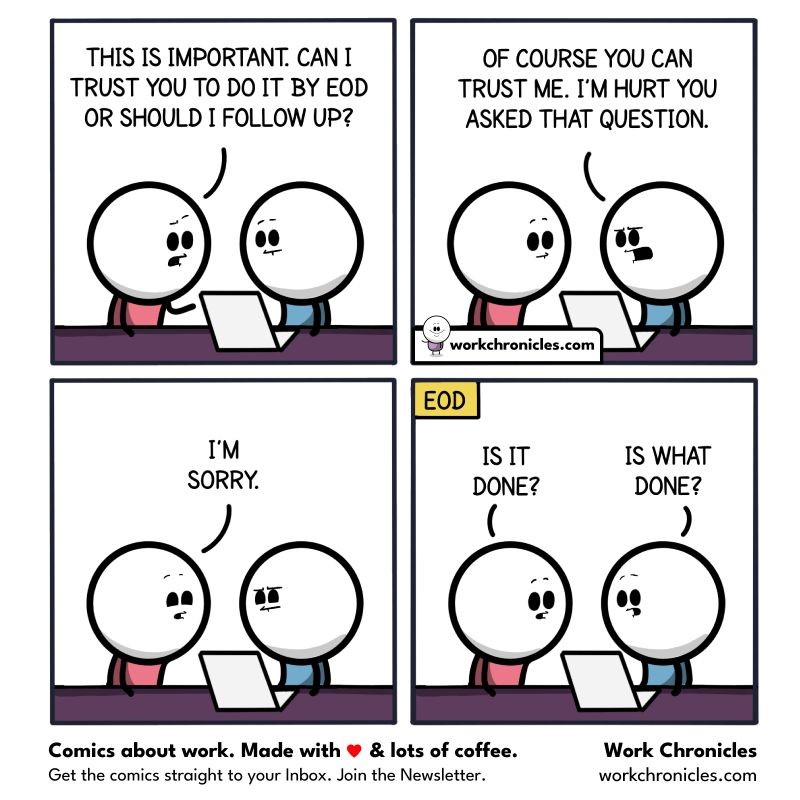Does the comic ring a bell? A great translation of "trust but verify".

In today’s work environment a verification is often seen as distrust or bad leadership. I disagree. Not doing it (in a good way) is a signal of lack of ownership and leadership.
The phrase "trust but verify," resonant from the days of the Cold War, captures a timeless principle that remains highly relevant in today's organizations I believe. It is however a fine line between trust and the need for verification.
Why it makes sense : When trust meets verification:
A few examples to highlight the positive impact of this approach.
- In healthcare, a surgeon's request for one last patient verification before surgery or a nurse's double-check of medication doses are practices rooted in their daily work. These actions are not about distrust but about ensuring the highest standards of patient care—and thus avoid impactful accidents. Would trust increase if they would not do it anymore?
- In business, especially in service agreements, it’s common to assume that services are being delivered as per the contract. Yet, without verification, services might continue inadvertently even after the contract has expired—resulting in losses and inefficiencies. We all can give examples…
- Similarly, in critical conversations, the practice of playing back what you've heard is a form of verification. It's not about mistrust; it's about ensuring mutual understanding and avoid assumptions.
The positive connotation: "Trust but Verify" as a proof of quality & accountability
Leaders who embrace the "trust but verify" approach are not displaying a lack of trust; rather, they are ensuring that the trust placed in individuals and processes is well-founded. This perspective is not about micromanagement, but about caring for the quality and integrity of the work. Trust cultivates an environment where employees feel safe to take risks, share innovative ideas, and work collaboratively towards shared goals. However, the absence of verification mechanism can leave room for complacency, unethical behaviour, missing deadlines (impacting other colleagues) and missed opportunities for growth.
How leaders can 'Trust but Verify'
As a leader, how can you implement this practice effectively?
- Ask open questions: Encourage dialogue that reveals understanding and progress.
- Demonstrate curiosity: Show genuine interest in the work being done.
- Seek to understand: Engage with the details not as a critic but as a collaborator.
- Review evidence: Look at the data or results to validate performance.
- Check metrics: Use metrics as confirmation, not as surveillance.
- Request examples: Encourage storytelling to illustrate outcomes and processes.
- Provide support: Use insights gained from verification to offer guidance and assistance.
Systematic Integration of "Trust but Verify":
How then can you systematize this approach to embed it into the organizational culture?
- Promote transparency: Use dashboards or one-pagers that make project progress visible.
- Implement an OKR framework: Instead of only relying on KPIs that look backward, use Objectives and Key Results to guide and measure forward momentum.
- Regular follow-ups: Establish routine check-ins that are consistent and focused.
- Structured agendas: Maintain similar topics across meetings to ensure organization-wide alignment.
"trust but verify" if adopted in a good manner is not a signal of distrust but one of quality and integrity. It's a leadership approach that values and respects the capabilities of team members while also safeguarding the standards of excellence that define a successful and responsible organization.
Your thoughts ?